How to Customize Your Scooter: A Step-by-Step Guide
Customizing your scooter can be an exciting and rewarding project, allowing you to tailor your ride to your unique style and needs.
Whether you're looking to improve performance, comfort, or just want to add a personal touch, this guide will help you navigate the process. Customization is not just about enhancing the scooter's appearance; it's about making it perfectly suited to your preferences and riding habits.
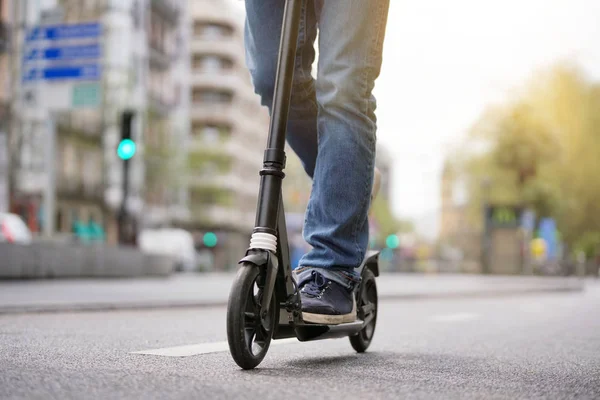
In this step-by-step guide, we'll walk you through every aspect of scooter customization. You'll learn how to select the right components that align with your goals, whether it's for speed, durability, or aesthetics. Additionally, we'll show you how to switch between different components seamlessly to achieve the desired performance or look.
We'll also provide tips on designing your scooter to reflect your personal style, and how to make the modifications safely and effectively. By the end of this guide, you'll have all the knowledge and confidence you need to take your scooting experience to the next level.
Understanding Custom Scooter Components
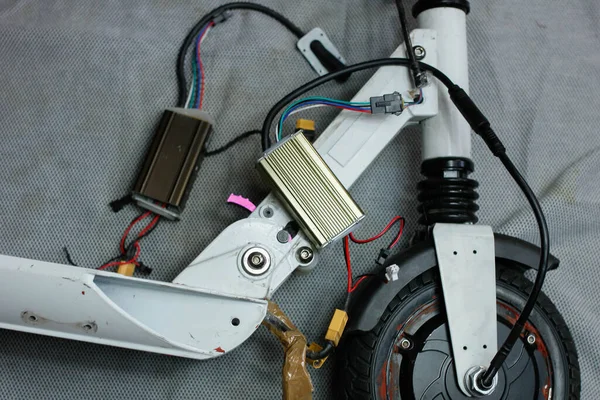
Your journey towards a custom scooter begins by familiarizing yourself with the key components: bars, decks, and forks. These components form the foundation of your dream scooter, and their roles are instrumental in guiding you through the customization process. So, the adventure begins!
Bars
Bars are more than just a place to rest your hands, they’re the control center of your scooter! But what should you consider when choosing bars? Firstly, they should match your riding style and preference. For instance, wider bars offer better control as they align with your shoulders. Moreover, the material of the bars plays a significant role. High-quality materials ensure durability, and the weight can influence the scooter’s balance.
So, whether you’re enjoying a leisurely ride or performing daring tricks, the right bar can make all the difference!
Decks
Moving on to the decks, these are the scooter’s foundation. They come in various sizes and shapes, each influencing how your scooter performs. The size of the deck matters! A larger deck offers more stability, perfect for big tricks, while a smaller one allows for more technical moves with better maneuverability.
The material used also plays a role. Aluminum offers lightweight toughness, steel provides strength for intense tricks, and titanium, while pricier, offers durability. So, find the deck that fulfills your needs and matches your ride style.
Forks
Lastly, we turn our attention to forks. These connect the front wheel to the scooter’s bars, playing a crucial role in ensuring a smooth ride and better control. The options are vast, from SCS, HIC, IHC, TCS, and ICS compression systems to threadless, telescopic, suspension, and solid forks. The material used, usually steel or aluminum, affects the durability and performance of both the wheels and the scooter as a whole.
Moreover, the design of the fork aids in absorbing shocks, reducing vibrations, and enhancing the smoothness of the ride. So, choosing the right fork is key to a comfortable and controlled ride.
Designing Your Scooter: A Step-by-Step Process
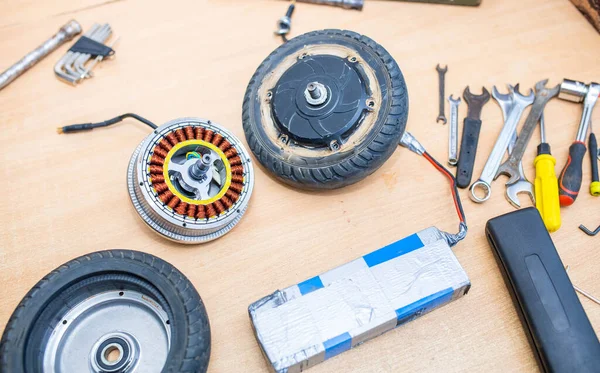
Now that we’ve covered the key components, we can embark on the thrilling process of designing your scooter. From selecting the best brands to assembling your scooter and customizing its look, we’ll guide you through it all!
Selecting the Best Brands
The first step in creating your scooter is selecting top-quality brands. This ensures that you’re getting parts that not only work well together but can also withstand the changes you want to make. Brands like:
-
Lucky Scooters
-
Alpha Pro Scooters
-
Envy
-
Fuzion
Our wide selection of products are renowned for their high quality and are perfect for customizing, especially for beginners. But remember, while most parts are generally compatible across brands, some might need tweaking to fit perfectly. So, take your time and make an informed choice.
Assembling Your Scooter
Once you've selected your parts, it's assembly time! This involves using the right tools and techniques to ensure a safe and secure ride. For instance, when assembling the deck, remember to take off the axle and spacers, slide the wheel onto the deck, and secure the axle. Equally important is the handlebars assembly.
Ensure the compression is tight before sliding the clamp onto the bar and onto the fork. Lastly, when installing the fork, remember to secure them in place by tightening the compression bolt.
Customizing the Look
Now comes the fun part: personalizing the look of your scooter! Whether it’s changing the color or adding cool graphics, customization adds a personal touch. When adding decals to your custom pro scooter, ensure the scooter’s surface is clean. Start applying from the center and slowly work your way from top to bottom. If you encounter bubbles, gently cut small slits into the decal using an Exacto blade.
Unleash your creativity and lend a unique aesthetic to your custom pro scooter with our custom scooter builder, featuring a variety of grip tape options!
Tips for Smaller Riders
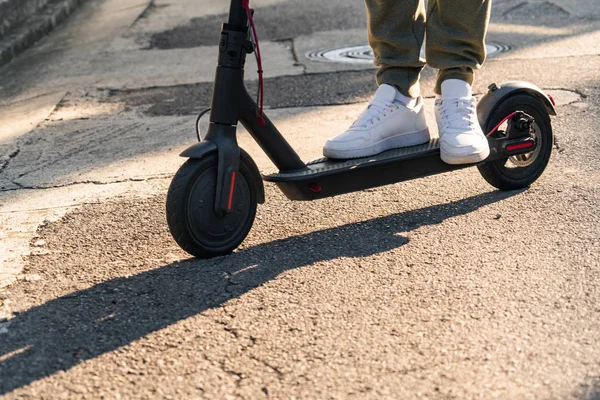
Custom scooters are not exclusive to adults; they can be enjoyed by riders as well! To ensure comfortable rides, consider the following:
-
Lower the handlebars to a height between the hips and waist.
-
For smaller riders, the ideal bar height is between 22” and 24”.
-
The deck size should be between 4.5 and 5.5 inches.
-
Smaller scooter wheels offer easier climbing and acceleration, improving comfort, positioning, aerodynamics, speed, and maneuverability.
Upgrading Your Stock Scooter
Consider upgrading your existing scooter with aftermarket parts if you’re looking to boost its performance. Not only does this step up its performance, but it also gives it a whole new look. Upgrades such as:
-
Big bore kits
-
Carburetor replacements
-
Exhaust upgrades
-
Variators
can significantly boost your scooter’s performance.
Plus, upgrading the scooter wheels can improve speed, brakes effectiveness, and overall riding smoothness. So, don’t settle for less; upgrade your scooter for a superior riding experience.
Showcasing Your Custom Scooter Creation
Having designed your scooter, the stage is set to showcase it! Social media platforms like Instagram and Behance, along with Facebook Groups and websites like Luckyscoot.com, are perfect for displaying your custom scooter and connecting with fellow enthusiasts.
To capture professional-looking photos, ensure you have good lighting and a clean background. Use techniques like gridlines and negative space for cool shots.
Make your posts interesting with catchy captions and encourage interaction by starting conversations. So, let the world see your unique ride!
Troubleshooting Common Customization Issues
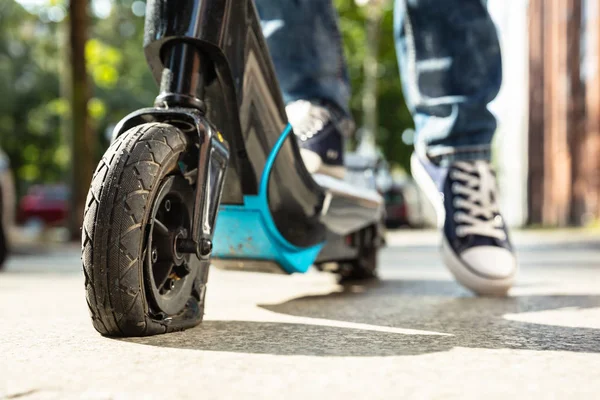
Scooter customization may at times pose challenges. But don’t worry, we have some solutions up our sleeve! From wheel alignment issues to a loose headset or handlebar wobble, we’ll guide you on how to tackle these common problems.
Remember, getting these issues fixed ensures your scooter is safe to ride and delivers optimal performance.
Investing in Your Scooter: Maintenance and Care
Upon creating your dream scooter, maintenance and care become imperative to ensure its longevity and optimal performance. Regular servicing, especially before any competitions, is key. Keep an eye out for signs of wear and tear such as:
-
weight roller wear
-
stability issues
-
worn grips and scooter wheels
-
deck distortion due to loose axles
-
impact damage on handlebars
By investing in your scooter’s maintenance, you’re ensuring its optimal performance and longevity.
Conclusion
Creating a custom scooter is not just about owning a unique ride, but also about the joy of the creation process. From understanding the key components to selecting high-quality brands, assembly, and customizing the look, each step brings you closer to your dream scooter.
With our tips for riders and advice on upgrading and maintaining your scooter, you’re ready to embark on an exciting journey towards designing your dream scooter. So, what are you waiting for, friends? It’s time to purchase the ride of your dreams!
Frequently Asked Questions
How much is it to build a scooter?
Building a scooter can have a price range of anywhere from $2,000 to $10,000 or more, depending on the components and your skill level.
Is it hard to build a scooter?
Building a scooter can be challenging due to the complexity of the assembly of different parts. Make sure to follow a guide for tips and tricks to help with the assembly.
What are the main components of a custom scooter?
The main components of a custom scooter are bar, deck, and fork, as they play critical roles in the scooter's performance and your riding experience.
How do I choose the right bar for my custom scooter?
Choose bars that match your riding style and preference, considering factors such as width for control and the material for durability and balance.
What's the importance of selecting top-quality brands?
Selecting top-quality brands is important because it ensures that the parts work well together and can withstand changes you want to make without compromising on price. It's crucial for a successful outcome.
